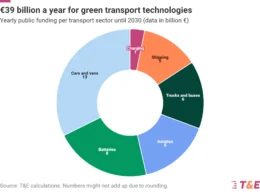According to newly released LinkedIn data, demand for green skills is set to double by 2050, but the current supply is not keeping pace, resulting in a significant skills gap. LinkedIn’s ‘Global Climate Talent Stocktake 2024’ report reveals that global demand for green talent increased by 11.6% from 2023 to 2024, while supply only grew by 5.6%. If these trends continue, the gap could widen to 101.5% by 2050.
Leading the demand for green talent is the UK, where 13% of jobs require at least one green skill, followed by Ireland (12.4%), Saudi Arabia (11.7%), Norway (11.6%), and Switzerland (11.5%).
On the demand side, Portugal saw a dramatic 71.3% increase in roles requiring green skills year-on-year. The UK experienced a substantial 46% rise, Costa Rica saw a 40% increase, Singapore saw a 27.1% growth, and Luxembourg witnessed a 27% rise.
In Germany, a key player in green hydrogen, the adoption of renewable hydrogen and hydrogen storage skills surged by 224.5% and 130.7%, respectively, yet overall green talent supply still lags behind the growing demand.
Sue Duke, LinkedIn’s VP of public policy and economic graph, emphasised, “Every climate goal around the world, every commitment made, is at risk if we don’t have a workforce that can deliver the change we urgently need. The economic opportunity is there, and a promising skills-based pathway exists. This year is an inflection point for our planet—and for workers—as countries and companies write new climate commitments; they must include explicit investments in the green workforce.”
This report comes ahead of the upcoming COP29 summit in Baku, starting on 11 November. It underscores that the hiring rate for green talent is significantly higher than average. Globally, green talent hiring rates are 54.6% greater than for the overall workforce. In the US, where demand for green talent grew by 9.8% and supply increased by 3.1%, the hiring rate for green talent is 80.3% higher than the overall rate.
In Ireland, demand grew by 22.1%, and supply increased by 6.3%, leading to a 79.8% higher hiring rate for green talent. The UK also saw green talent hiring rates 72% above average, despite a 46% rise in demand and only a 5.3% supply increase.
Even in countries like Finland and the Netherlands, where green job postings have decreased, green talent is still hired at more than twice the rate of other roles.
LinkedIn stresses the urgent need to expand the green talent pool and close the skills gap. The platform advises governments to integrate skills development into climate strategies and Paris Agreement commitments and calls for a formal COP29 declaration to accelerate workforce development for climate goals.





















